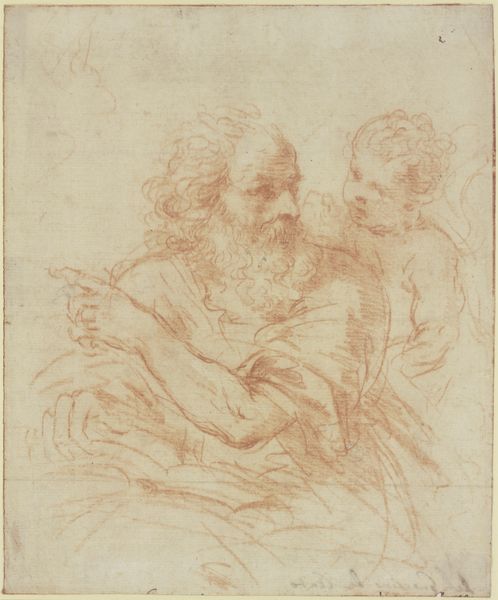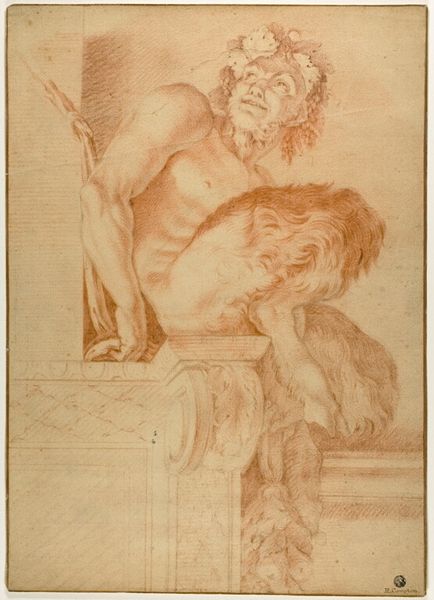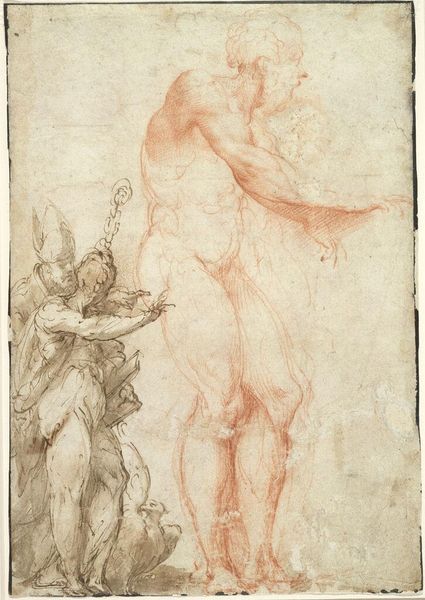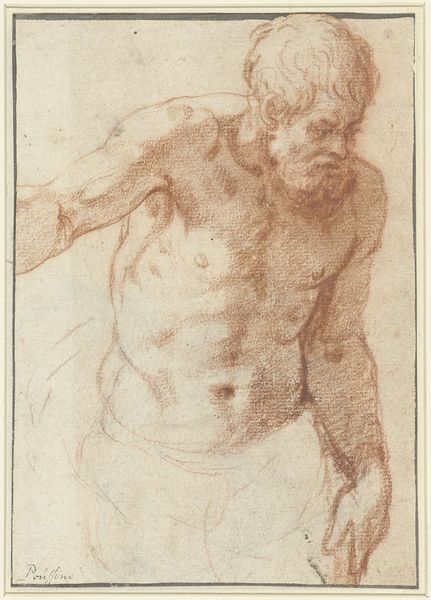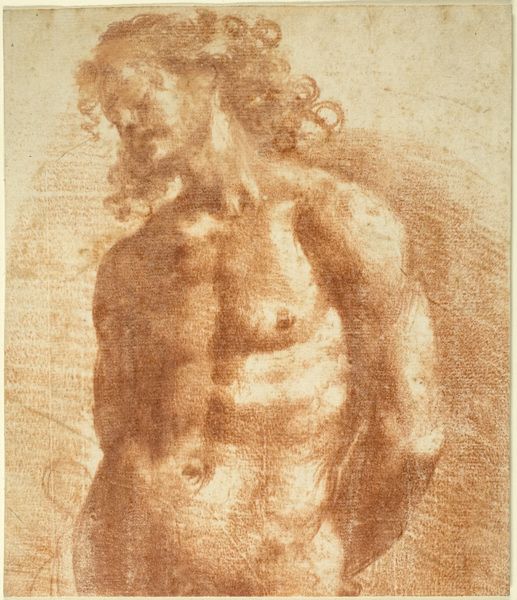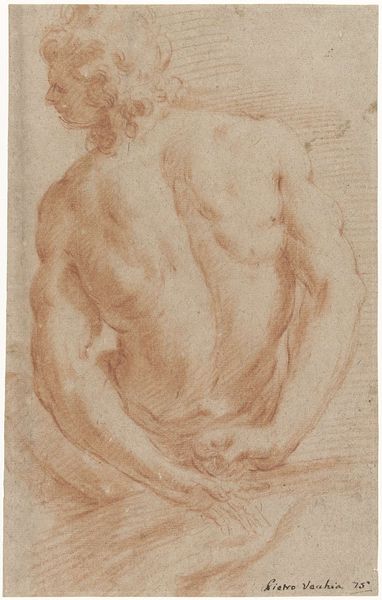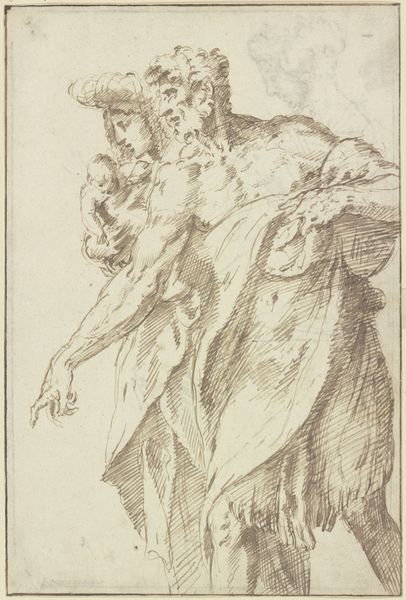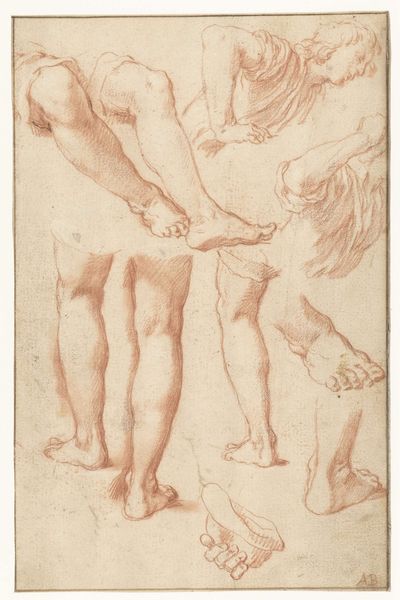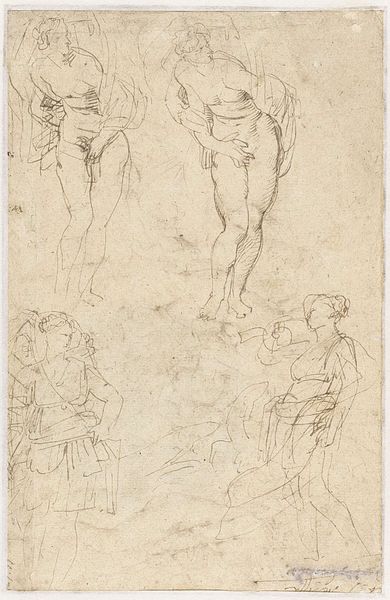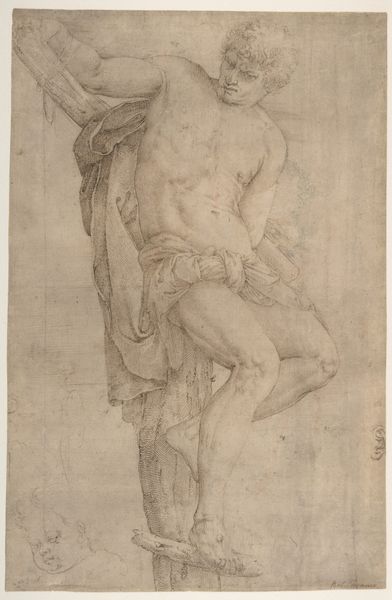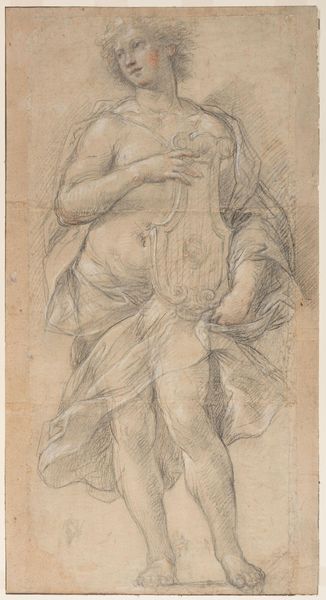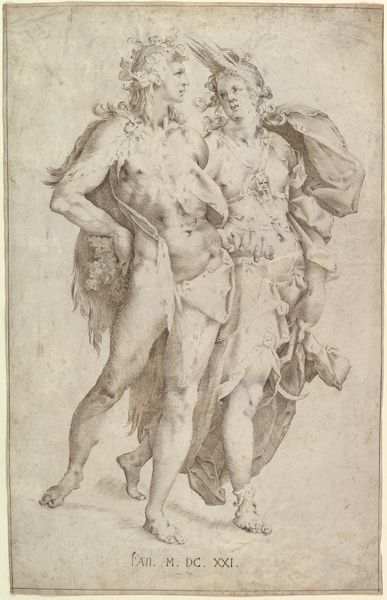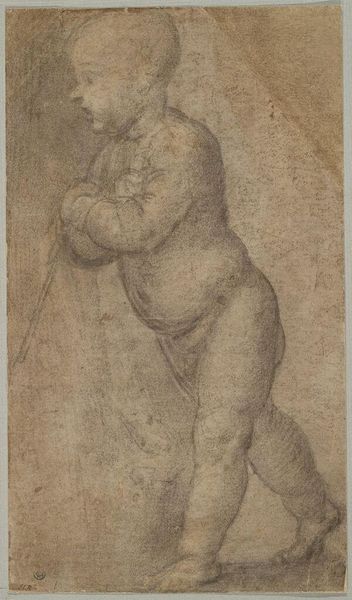
drawing, charcoal
#
portrait
#
drawing
#
charcoal drawing
#
figuration
#
11_renaissance
#
pencil drawing
#
charcoal
Dimensions: height 219 mm, width 166 mm
Copyright: Rijks Museum: Open Domain
Curator: Alright, let’s turn our attention to this fascinating drawing titled "Twee mannen," which translates to "Two Men," attributed to Guercino and dating sometime between 1601 and 1666. It's a study rendered in charcoal, now residing here at the Rijksmuseum. Editor: Right away, it feels like a conspiratorial snapshot, doesn’t it? All russet tones, with this almost uncomfortable intensity between them. I feel like I've interrupted something important. Curator: Indeed, Guercino had a keen interest in depicting human emotion and interaction. Charcoal drawings like these were crucial for artists during this period. They allowed for quick studies of anatomy, light, and composition, preparations for larger paintings. The figures themselves lack idealization and feel surprisingly grounded in their humanity. Editor: Grounded is a great word for it! The sketchiness adds to that… that lived-in feel. Look at the man with the turban—all those scribbled lines around his face… each seems to tell a tiny story. They almost vibrate with… with contained worry, maybe? He has that furrowed brow, the heavy, burdened eyes of the old in stark contrast with the angularity of the younger character in a way which accentuates his hard look. It looks as if they are plotting something together. Curator: The lack of specific context does invite speculation. These drawings often functioned as records of observations, potentially serving multiple purposes later on. It’s worth remembering that the period between 1601 and 1666 was politically charged. What's striking is how the artist utilized charcoal to convey not just form, but also psychological depth. Consider the deliberate contrasts in shading. Editor: Oh, that chiaroscuro… the way light grazes that younger man's chest, making him almost palpable, next to the almost faded one… they are set with that sepia coloring against a vacant setting so they are not from anywhere we know; that emptiness really amplifies their isolation, their co-dependence and intensity. It lends a very modern sensibility to a 17th-century work! Curator: It's a brilliant example of how artists, even in preliminary sketches, could imbue their work with narrative and emotional resonance. By understanding these broader contexts, we gain a richer appreciation. Editor: Absolutely! It's funny—I came expecting a stiff historical portrait and found myself eavesdropping on a secret whispered across centuries. Definitely gives you a jolt. Curator: Yes, art history brings depth and breadth to the appreciation of even preliminary artworks!
Comments
No comments
Be the first to comment and join the conversation on the ultimate creative platform.
